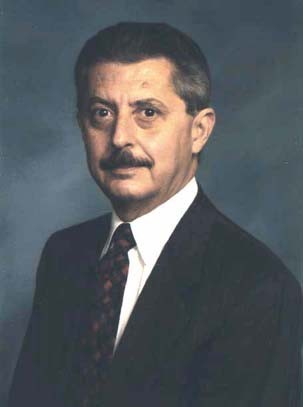|
The Hubble Space Telescope
|
|
|
James Carlock
|
|
| During the
1950's, a young boy was growing up in the Allons community of Overton
County. He attended grade school there, as did his sister, who is a year
younger than him, and in 1959, his family moved to Livingston. His father
ran a retail clothing business on the square in Livingston, and his mother
taught school. After graduating from Livingston Academy in 1962, he
attended Tennessee Tech where he majored in electrical engineering. He
completed three years at Tech, worked in Oak Ridge, and attended UT
extension night classes over a period of five years. Then in 1967, he
moved to Sunnnyvale, California where he began working part-time for
Lockheed (now Lockheed Martin) space division while going to graduate
school a Stanford, and then became a full time employment in 1971. His
early jobs included work on the guidance and navigation systems for a
variety of military space programs, and during the 80's, he, along with a
team who worked under his direction, built, made ready to work, and then
launched the Hubble Space Telescope. The young manís name is Jim Carlock
(most who know him in Livingston remember him as Jimmy), son of Carey
Carlock and Lois Carlock. His sister, Linda, lives in Louisville, Ky.
|
|
|
|
Iím sure most everyone has heard of the Hubble space telescope, but probably most folks are like I am, not really sure what it does. In doing some research about it, this is some condensed information of what Iíve learned: The Hubble Space Telescope, known as our eye on the universe, is designed to see ten times more clearly into the cosmos than typical earth-based equipment. It can see objects one-billionth as bright as the human eye can see. Circling earth every 97 minutes 375 miles above the distorting and polluted atmosphere, Hubble sends back images of remarkable clarity. Hubble works around the clock to unlock the secrets of the universe. |
| It uses
excellent pointing precision, powerful optics, and state-of-the-art
instruments to provide stunning views of the universe that cannot be made
using ground-based telescopes or other satellites. Jim described his work
on the Hubble to me like this: "My teamís involvement was to build the
satellite structure and control systems, put all the pieces together (some
of the instruments and optics provided by NASA), test it, deliver it to
the Space Shuttle for launch, and do the first six months of operations.
The project covered about 10 years, involved over 400 Lockheed people. I
was the project manager for the last three years. Hubble was launched in
April 1990 with plans for periodic servicing missions by the Shuttle and a
total life of 10-12 years. It has now been in operation over 13 years and
still going. More modern telescopes are now being planned to replace it.
The team that produced Hubble received many medals from the NASA center in
Huntsville." I also learned from additional research I did that as project manager, Jim Carlock had 500 people working under his guidance. On the day in April of 1990 when the Hubble was launched, Jim was in a firing room at the Kennedy Space Center to give the "Go" for launch when another former Livingston resident came in to wish him luck, and that was none other than Mike McCulley, pilot for the Atlantis Shuttle in October of 1989. Jim and Mike attended Livingston Academy at the same time. Jim, who has remained single, resides now in Cupertino, California, near San Jose. He told me that as a student in grammar school, he became interested in electricity. He was curious first of all about how a car ignition worked, and then how radios and telephones worked. Taking algebra and physics in high school, both taught by Arlie Poston, and later Calculus as a freshman at Tech helped to motivate him and created a quest to know more. He certainly has played a very important role in the space program for the United States. He is to be congratulated for his accomplishments in this field, and I find that it boggles my mind to think how very smart and capable a person must be to be able to help design something that has expanded our understanding of galaxy evolution. The next time you look up into the nighttime sky, think of this former Overton Countian and how his skillful work has helped astronomers see unimagined details that not too many years ago were impossible to see. And it might just be that we need to change the sign on the outskirts of town to include Jim Carlock along with Mike McCulley to let folks know Livingston is home to both of these men that we feel honored to claim as having grown up here.
|
|
|
|
|

